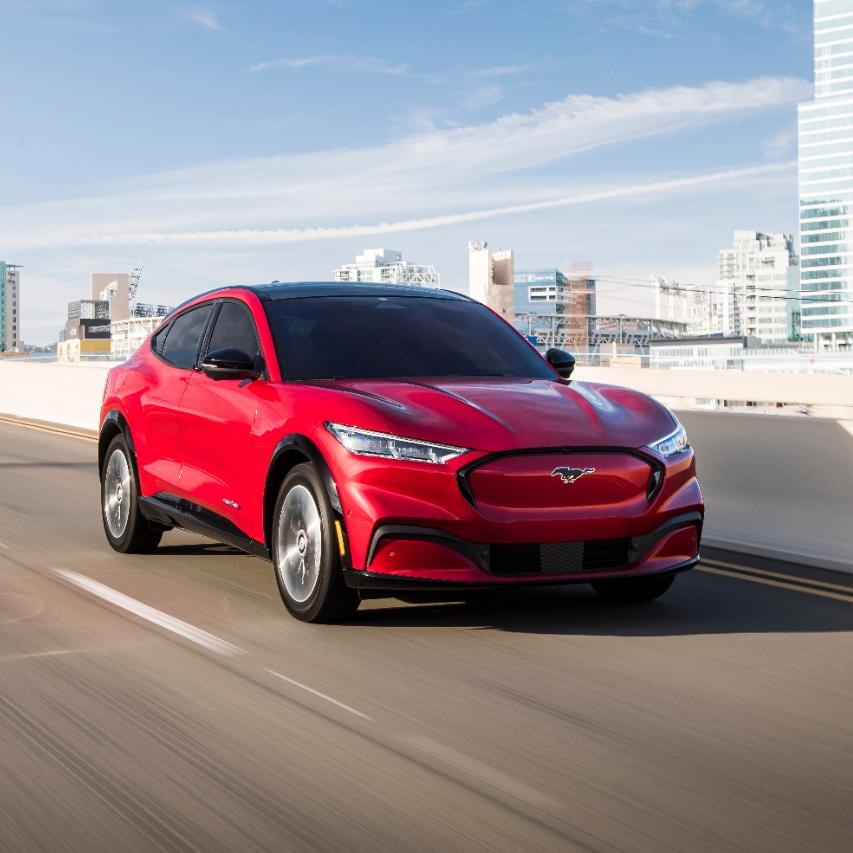Etsy Commits to Net Zero Carbon Emissions by 2030


The newest sustainability goal from the online marketplace Etsy is its recent announcement that the company is determined to achieve net zero carbon emissions by 2030.
“Climate change remains an ever-present threat to our environment and humanity, and we are bound and determined to do everything within our power to not only continue to be a carbon neutral company, but to also drive reductions in our overall footprint,” Josh Silverman, chief executive officer at Etsy, wrote in a press statement.
Last year, the creative goods site became the first e-commerce company to offset emissions from shipping, part of its Scope 3 greenhouse gas emissions. Executives decided not to push any of the costs onto its sellers or buyers. For a marketplace with independent sellers, shipping accounts for 98 percent of its carbon emissions.
The 2030 target joins other environmental ambitions, including reducing energy use by 25 percent by 2025 and continuing to divert 90 percent of waste across global operations. Etsy says it has also made headway toward sourcing 100 percent of its electricity from renewables — part of which includes securing a power purchase agreement that supports the development of wind and solar power in Illinois and Virginia.
Reducing Scope 1, 2 and 3 emissions
Etsy’s target encompasses Scope 1, 2 and 3 emissions and is aligned with the Science Based Targets initiative’s protocol, though validation is still pending. The Science Based Targets initiative provides scientific support to companies aiming to reduce emissions and achieve net-zero targets.
Etsy’s plans include a 50 percent absolute reduction in Scope 1 and 2 emissions and a 13.5 percent absolute reduction for Scope 3.
“In defining this goal, we set out to cast the widest net possible to ensure we’re reducing both our direct and indirect carbon impact,” Silverman writes in a press statement. The reductions will touch “every corner of the Etsy business,” including office operations, purchased energy, shipping and packaging, Silverman continues.
Two ways Etsy plans to broaden its impact on the industry, Silverman notes, include working more often with sustainable vendors and suppliers and continuing to advocate for a decarbonized logistics and transportation sector.
What does net zero mean for companies like Etsy?
Last year saw a dramatic swell in net zero emissions commitments from governments and businesses. From the corporate perspective, carbon reductions are an investment not only in a company’s security from climate risks, but also in market competitiveness.
As investment firms increasingly call on companies to align their actions with the expectations of the Paris Climate Agreement, it appears that businesses can no longer afford to exchange climate action for climate rhetoric.
“Your organization…has a responsibility to become a part of the solution. Failing to do so will impact your ability to attract talent, manage risk, and innovate for growth,” Nigel Topping, CEO of the We Mean Business coalition, which encourages corporate climate commitment, writes in the Harvard Business Review.
Topping explains what sort of action cushions a business from falling behind. “Science-based targets will provide you with a way to future-proof your business plans by ensuring that all strategic decisions incorporate climate risk and opportunity analysis. This will simultaneously drive zero-carbon innovation and help you guard against stranded assets.” He adds that a 100 percent commitment sends a clear message to stakeholders.
Scope 3 emissions are where the action happens
Although Etsy’s carbon footprint may be a modest drop in the bucket compared to the impact of a BP or a Chevron, its commitment does set an example for others — especially, as the Natural Resources Defense Council (NRDC) emphasizes, in beginning to tackle its Scope 3 emissions, which include anything not directly controlled by a company.
Scope 3 emissions occur anywhere along a company’s value chain — and can carry the brunt of the impact. For example, if a company sells paper, Scope 3 emissions would carry all the way to the forest and through use and disposal. In analyzing other corporate commitments, the NRDC has found major discrepancies in emissions reporting, particularly when it comes to Scope 3.
For Etsy, offsetting carbon emissions from shipping costs less than $1 million a year. A larger corporation would likely spend more tackling Scope 3 emissions, but that’s not to say it wouldn’t pay off.
Image credit: Annie Spratt/Unsplash
With Solar Power, Ikea Breathes New Life into Brick-and-Mortar Retail


The rise of e-commerce has spelled doom for a growing number of brick-and-mortar retail outlets, and that can have an impact on local communities by cutting off opportunities for employment, career development, and civic engagement. Fortunately, some strategies are emerging that can help stem the tide. Among them are such clean technologies as solar power, an area in which Ikea has staked out an effective model to follow.
Brick-and-mortar doesn’t have to die
Last August, Aaron Cheris and Marc-André Kamel of the firm Bain & Company presented a detailed analysis in which they described how the COVID-19 pandemic has exacerbated the decline of brick-and-mortar retail, while also taking note of emerging strategies for sustaining operations.
They catalogued four options, one of which is the now-familiar practice of offering curbside transactions, including an “omnichannel hub” approach in which customers order their items online.
However, they also make the case that the pandemic has heightened consumer appreciation for in-store experiences related to community, convenience, trust and empathy. As a second strategy, they suggest that retailers update the in-store experience to deploy new technologies that echo the conveniences of e-commerce.
“Consumers still value a curated offering of products and services, and there is time for at least some department stores to update and digitalize their curation formula. Their use of physical space will need to change radically, mixing products with experiences and entertainment,” they write.
A third area addresses the challenge of scaling up beyond local traffic. Smaller retailers may not have the wherewithal to establish their own e-commerce systems, but they could explore the potential for collaborating with Amazon and other leaders in the field.
Finally, the authors underscore the “tactile advantage” enjoyed by brick-and-mortar operations.
“Consumers and brands benefit when shoppers can test or try on a product in person (that’s why brands still pay for stores within stores), they explain. “Executive teams need to find ways to preserve that tactile advantage while keeping customers safe from COVID-19,” they explain.
The retail store as a community resource
The authors also recommend shedding locations when necessary, but the overall theme is that brick-and-mortar must leverage new technologies to adapt to changing times and manage crises, while also building onto the traditional strengths of the in-store experience.
One of those strengths is to function as a community resource. Some malls, for example, accommodate seniors and other local residents looking for a safe, comfortable space for walking exercise.
The Texas power crisis demonstrates the community resource angle under more dramatic circumstances, as personified by Texas businessman Jim “Mattress Mack” McIngvale. Responding to a February cold snap and statewide power outages, McIngvale opened his furniture stores as warming shelters for local residents, as he has done during several weather-related emergencies in recent years.
The benefits of clean technology for brick-and-mortar retail
With the February Texas power crisis in mind, retail stores could expand their technology adaptation strategies beyond e-commerce, to include new clean technologies as a community resource.
Retailers are already beginning to recognize that they can engage customers by offering free charging for handheld electronic devices. A similar trend for electric vehicle charging is emerging as the electric vehicle market grows.
The advent of low-cost energy storage expands the opportunities for brick and mortar stores to provide emergency and non-emergency charging services for local residents.
That could be in the works for Ikea. Through its parent firm Ingka Group, the company has already emerged as a renewable energy leader, with investments in far-flung wind farms as well as rooftop solar power installations atop its stores. Last week the company announced a new group of solar power projects in the U.S., including completion of a solar car park at its store in Baltimore along with plans for seven additional parking and rooftop solar projects: College Park in Maryland, and Burbank, Costa Mesa, East Palo Alto, Emeryville, San Diego and West Sacramento in California.
Altogether, the eight installations will produce almost 11 gigawatt-hours of electricity annually. Five of the eight new projects will also include energy storage systems for a total capacity of 5 megawatt-hours, meaning that electricity generated by solar power systems will be available at night or during bad weather, potentially providing an emergency power source during storms.
Solar power and the bottom line
The new installations will add to Ikea’s existing portfolio of clean tech at its 51 U.S. properties, including wind and geothermal as well as solar power, along with 143 electric vehicle charging stations.
While clean technology does provide new community engagement potential for Ikea’s brick and mortar locations, the driving force is the bottom line. At the new Baltimore location, for example, Ikea has already charted a 57 percent cost savings for the last four months of 2020, the result of an 84 percent drop in the store’s outlays for purchased energy.
With savings like that, it’s little wonder that Ikea expects to achieve a climate-positive energy profile, partly on the strength of its brick-and-mortar operations.
The rooftop solar power and energy storage options may be out of reach for many retailers, often because the store sits in rented property. However, the advent of community solar power programs can provide retail tenants with opportunities to support new clean technology in their community, and continue to adapt the in-store experience to the changing times.
Image credit: Alexander Isreb/Pexels
As Attention Turns to Black Farmers, This Global Food Giant Pledges Support


The resurgence of the Black Lives Matter movement last summer and fall drew attention to structural racism in the United States, with a focus on local law enforcement and corporate policies. Left unaddressed was the federal government’s pivotal role in pushing generations of Black farmers off the land. Last month, a group of Democratic U.S. Senators introduced new legislation that would help right some of the wrongs. Cargill is among industry stakeholders that seem prepared to act in support, but pitfalls remain.
The USDA and structural racism in America
The practices of the U.S. Department of Agriculture over the past 100 years should lay to rest any doubt that structural racism is a real phenomenon with existential consequences for Black people and other people of color.
Racial discrimination at USDA has been the subject of numerous studies and reports as well as lawsuits over the years. In 2019 the Center for American Progress (CAP) summarized in a report how USDA played a leading role in decimating the ranks of Black farmers throughout the 20th century and into the Trump administration.
“The authors found that black farmers have had less access to credit and less access to extension programs than their white counterparts, preventing black farmers from modernizing and scaling up their farms as white farmers have done,” the think tank noted.
As CAP observed, at the beginning of the 20th century approximately 14 percent of U.S. farmers were black. By 2012, the number was less than 2 percent, and entire rural communities have suffered the ripple effects.
“The loss of black farmland has had a profound impact on rural black communities, which today suffer from severe economic challenges, among them a poverty rate twice that of rural white communities,” CAP reported.
Righting the wrongs at USDA
Although discrimination at USDA long predated the Trump administration, the former president’s trade war with China exacerbated challenges faced by Black farmers and underscored their inability to obtain the same federal resources provided to white farmers.
In 2019 John Boyd, a fourth generation Black farmer who is the founder and president of the National Black Farmers Association (NBFA), testified to Congress about the impact of former President Trump’s trade war with China. He charged that Trump’s bailout policies for U.S. farmers disproportionately favored white male farmers.
The Trump administration “chose to apply the same broken rules that have funneled farm subsidies to the biggest farms for decades. These rules are especially unfair to African American, Latino and Asian American farmers, who tend to have smaller operations than white farmers – and are less likely to be eligible for government farm supports at all,” Boyd testified.
Boyd charged that he and many other eligible small farmers, were delayed and obstructed in receiving assistance. He also charged that the USDA and Trump made no effort to conduct outreach or provide resources to Black and small farmers hurt by the trade war.
“As black farmers, we have a long history of being shut out of help from the USDA. That department has a well-documented pattern over many decades of treating black farmers poorly, resulting in slow, denied, or delayed help compared to other farmers,” Boyd concluded.
A new president, another opportunity for change
President Joe Biden took office on a pledge to dismantle longstanding structural barriers to racial equality in the U.S., and his ability to rally support in Congress will soon be put to the test.
Last month, U.S. Senators Cory Booker (D-NJ), Elizabeth Warren (D-MA), Kirsten Gillibrand (D-NY), Tina Smith (D-MN), Reverend Raphael Warnock (D-GA) and Patrick Leahy (D-VT) announced the introduction of the Justice for Black Farmers Act, described as “landmark legislation aimed at addressing and correcting historic discrimination within the U.S. Department of Agriculture in federal farm assistance and lending.”
The bill was originally introduced in 2020 by Senator Booker, who underscored the “direct connection between discriminatory policies within the USDA and the enormous land loss we have seen among Black farmers over the past century.”
Last month’s announcement by the Senate co-sponsors also included a statement from Boyd. He noted that the new bill provides for engineering more accountability and oversight into USDA moving forward, in addition to enacting immediate assistance in the form of debt relief and land restoration to redress past wrongs.
A holistic approach toward restoring opportunties for Black farmers
The organization EWG (formerly Environmental Working Group) also issued a joint statement with Boyd in support of the Justice for Black Farmers Act, drawing attention to other provisions of the bill that deal with assistance in settling land inheritance and other succession issues. The bill also establishes a land grant program to provide new opportunities for aspiring Black farmers to enter the business.
The land grant program would be supported with paid apprenticeships for disadvantaged young adults, and with technical and legal assistance from the nation’s Historically Black Colleges and Universities (HBCUs) and other advocates. HBCUs would also receive additional funding to expand their agricultural programs.
“By making an unprecedented investment in training through historically Black colleges and universities and groups like the National Black Farmers Association, the Justice for Black Farmers Act will ensure that Black farmers have the tools they need to succeed,” Boyd and Faber concluded.
In addition, the bill provides more resources for all disadvantaged farmers and ranchers. That includes reforms related to food system issues, with particular attention on the influence of multinational corporations on the meat packing industry.
Moving on without owning up
The Justice for Black Farmers Act will be a significant step forward if it becomes law, but it is only part of the solution to the impact of systematic racism on Black farmers. To the extent that corporate stakeholders have had a hand in fostering generations-long discrimination against Black farmers, they have a responsibility to help undo some of the damage.
In doing so, corporate leaders must also plan to address discrimination in their own history, or they will risk being accused of moving forward without addressing past wrongs.
For example, last September John Deere announced a new coalition with the National Black Growers Council and other partners in support of Black land succession, only to face reaffirmation of a boycott by NBFA over allegations of discriminatory behavior.
For that matter, the Deere announcement carefully avoided any mention of structural racism, choosing instead to describe “work needed to improve the livelihoods of Black farmers with a particular emphasis on the preservation of heirs' property.”
Say its name: structural racism
On February 25 Cargill also announced an initiative in support of Black farmers in partnership with the National Black Growers Council. Apparently, Cargill learned some lessons from the NBFA boycott, because it fills in some of the blanks left by the Deere coalition.
Rather than skirting the issue of structural racism, the Cargill announcement draws a direct connection between the nation’s roots in Black enslavement and the persistence of structural racism up to the present day.
“Like many industries, agriculture is facing a racial equity problem,” the announcement begins. “Traced back to slavery in the U.S., systemic injustices involving property rights, financing and other exclusionary practices persist today for Black farmers who make up less than 2 percent of the country’s 3.4 million farmers.”
In the announcement, Cargill’s general counsel and Chief Compliance Officer Anna Richo also emphasizes that the response must match the scope of the problem.
“Racism is systemic, so our approach to addressing it must also be systemic. The status quo is not acceptable. We must do more in food and agriculture to invest in the Black community,” Richo explains.
In another apparent diversion from the Deere approach, Cargill’s new Black Farmer Equity Initiative, which also includes the organization 100 Ranchers, will begin by educating itself on the issues.
“As a first step, the partners will convene listening sessions with Black farmers, ranchers and producers, to map barriers and prioritize ways to improve market access and financial inclusion, sustainable agricultural practices, support next-generation agriculture leaders and advocate for policies that advance equity in agriculture,” Cargill explains.
Cargill’s ground-up approach appears designed to avoid the conflict that has tripped up Deere, though that remains to be seen. The real test will be whether or not Cargill, Deere, and other industry influencers step up and lobby in support of the Justice for Black Farmers Act.
Image credit: Shutterstock
As the Hydrogen Economy Heats Up, This Automaker is Turning to Fuel Cell Cars


The United Kingdom has become a hotbed of research and development aimed at promoting the new hydrogen economy, and it seems that both the iconic Jaguar and Land Rover brands have caught the ripple effect. Last week, the umbrella firm of Jaguar Land Rover (JLR) announced plans to introduce hydrogen fuel cell technology into its lineup as part of its ambitious “Reimagine” vehicle electrification plan.
The hydrogen economy, national identity, and branding
JLR has been a wholly owned subsidiary of India’s Tata Motors since 2008, and the company has been determined to hold onto its U.K. brand identity as the global auto market turns to electrification.
Though JLR’s choice of the word “Reimagine” for its electrification plan suggests more aspiration than action, the fact is that electric vehicle (EV) technology is already maturing. JLR plans to take advantage of the full suite of technology. That includes the emerging area of high-efficiency electric power trains hybridized with internal combustion engines over the near term, leading to 100 percent electrification and a 2039 zero carbon goal down the road.
The challenge will be to market the new technology as an element in the British-style luxury and performance expected of the Jaguar brand, while living up to demands of the active lifestyle associated with the Land Rover brand: That appears to be where hydrogen fuel cell technology comes in.
Hydrogen is an abundant, zero emission fuel that also has numerous applications in agriculture and industry. Until recent years its role in sustainable development was questionable, though, because almost all of the global supply is derived from natural gas.
Renewable hydrogen is finally emerging as a more sustainable alternative. That is the key to unlocking the hydrogen economy, and the U.K. has become a leader in the field.
JLR steps into hydrogen economy
The U.K.’s vast offshore wind and tidal energy resources provide it with a strong advantage in the new green hydrogen economy, with Scotland emerging as a centerpiece of activity. The prospect of an abundant supply of green hydrogen dovetails neatly with JLR’s hydrogen fuel cell car plan.
Last summer Green Car Reports took note of the company’s hydrogen fuel cell activity in the SUV space, with a focus on larger vehicles like the Range Rover.
Apparently, the company is zeroing in on hydrogen fuel cell technology to fill in a gap left by batteries. The law of diminishing returns kicks in where larger vehicles with longer range are concerned, because battery packs weigh more and take up more space. Hydrogen fuel cells offer the prospect of lighter weight and a more compact footprint.
The focus on high end SUVs also helps to resolve a price point issue. Various auto makers have been struggling to introduce fuel cell passenger cars to the market, but consumer interest has lagged while costs have remained stubbornly high.
By focusing on SUVs, JLR has the opportunity to attract customers who are already willing to pay more money to get more car, and who are willing to pay a premium for a top brand.
A secret weapon in the global hydrogen economy
The focus on larger vehicles may also indicate that JLR will leverage the advantages of the global hydrogen economy through its parent company Tata.
The new Reimagine plan envisions ramping up technology collaborations between Tata and Jaguar Land Rover, and Tata already has a head start in that regard.
Though hydrogen fuel cell passenger cars are a tough sell, the technology is attracting business in practically every other transportation sector where range and weight are a concern. That includes locomotives, aircraft, watercraft, long-haul trucks and military vehicles.
One main area of activity is in public buses, and Tata already has a head start in that area, with an assist from leading Indian research organizations.
In 2017 Tata introduced the hydrogen fuel cell “Starbus” for intra-city use, the result of a collaboration between the company and the Indian Space Research Organization, in partnership with India’s Department of Scientific and Industrial Research.
It’s possible that JLR foresees a scaled-down version of the Tata collaboration for its hydrogen fuel cell lineup, though that remains to be seen.
What is clear is that the emerging hydrogen economy has the potential to breathe new life into legacy brands by enabling them to fortify their national identity with a strong dose of sustainable fuel.
Image credit: Land Rover
If You Invested in ESG Funds, 2020 Was a Good Year


It’s a year most of us are now happy to see in the rearview mirror, but 2020 was kind to one subset of the financial sector: ESG funds. “Think of ESG investing as a recovery strategy and the future of the global economy comes into sharper focus,” TriplePundit’s Tina Casey observed in April.
Investors have heeded that call.
At a macro level, funds screened for environmental, social and governance (ESG) factors proved to be more resilient than conventional fund counterparts, according to a report released last week by Morgan Stanley. The financial giant’s Institute for Sustainable Investing crunched the numbers and found that total returns for U.S. sustainable and ESG equity funds outpaced traditional funds by 4.3 percent in 2020.
ESG bonds also held their own, providing returns 0.9 percent higher than the traditional bond funds available on the market last year.
“The difficult events of 2020 underscored the importance of sustainability concerns and strengthened the rationale for sustainable investing,” said Audrey Choi, Morgan Stanley’s chief sustainability officer and CEO of the Institute for Sustainable Investing, in a public statement. “Sustainable funds’ strong risk and return performance during an exceptionally turbulent year further erodes the persistent misconception that sustainable investing requires a performance sacrifice.”
The company’s research follows up on a previous report that showed ESG funds outpacing traditional funds during the first six months of 2020. Over the years, Morgan Stanley’s analysts said that both ESG and conventional funds performed at a similar pace, but for investors who are queasy at the thought of market volatility, ESG funds generally were far more stable and offered more downside protection.
Other financial companies have made similar observations. In fact, sustainable and ESG funds scored record inflows during the first few months of the pandemic amid turmoil in global equity markets, a recent Morningstar report concludes, and for the most part maintained that performance as 2020 dragged on.
U.S. investors in turn have been buying into these funds’ performance. A Morgan Stanley report from last year found that approximately half of the country’s individual investors have turned to sustainable investing. Meanwhile, at least 80 percent of asset-owner financial institutions say they are integrating ESG considerations within their investment processes.
There’s no reason to think this trend will not continue through 2021.
“The U.S. sustainable investing market ended the year on a high note, with record-breaking net inflows in October, November and December,” added Matthew Slovik, managing director and head of global sustainable finance at Morgan Stanley. “Amid this continued growth, analyzing the performance of sustainable investments, and proving their resiliency, is critical to advance the field and to encourage others to invest with an ESG mindset.”
Meanwhile across the pond, ESG funds had a banner year in Europe, too, the Financial Times recently reported.
Image credit: Pexels
After the Texas Winter Storm, a Clarion Call for Investing in Energy Efficiency


Photo: A street in Wills Point, outside of Dallas, during the Texas Winter Storm of February 13-15.
At 4:00 am on Monday morning, February 15, everything stopped and then started to grow cold. The text from Austin Energy said it started rolling blackouts that would last a maximum of 40 minutes. Minutes turned into hours that turned into days. But we were lucky. In 2011, our house had been fully renovated, including energy-efficiency investments in insulation and new windows. It never dropped below the 50s in our house. Those in older or low-income homes across Texas weren’t so lucky.
The effect of the blackout at home
A lot of people are talking about what went wrong, how Texas’ deregulated market and the lack of proper planning — especially in the face of a changing climate — failed its citizens. Power generation infrastructure and transmission should have been weatherized. In 2015, I worked with others on HB 2571, a bill in the Texas House introduced by now-Dallas Mayor Eric Johnson. The bill would have required state agencies — including the Public Utility Commission of Texas, which regulates the Electric Reliability Council of Texas (ERCOT), the state’s electric grid operator — to include the latest climate data in their strategic plans. It was killed on the House floor.
The state leadership has resolutely refused to admit that climate change is already wreaking havoc on the state, from droughts to floods, hurricanes to the latest Texas winter storm. They claim they could not have predicted a storm of this magnitude. They also didn’t think Hurricane Harvey would wreak such havoc. The problem is: When the latest climate data isn’t used to plan future resource needs, it is not adequate planning. Using past climate and weather data for long-term planning is like driving down the highway while looking in the rearview mirror.
But that’s at the generation and transmission level. What about in homes? Long before the Texas winter storm, the state has been resisting effective energy-efficiency and weatherization policies. It’s not alone in that either: Many states, especially across the southeastern and midwestern U.S. do not prioritize energy efficiency. The Alliance for an Energy Efficient Economy ranked Texas 29th in the nation in its latest energy efficiency score card, and its relatively high score is based on some state programs aimed mostly at commercial and public buildings.
Despite being one of the first states to implement an Energy Efficiency Resource Standard (EERS), Texas has among the lowest targets in the country, despite having the highest potential. The balance between a competitive market and protecting consumers weighs heavily on the market side with many consumers literally being left in the cold.
Texas weatherization for multifamily housing
The American Reinvestment and Recovery Act of 2009 jumpstarted weatherization in the state, including infusing a revolving loan fund for public buildings with much needed resources. But antiquated policies, market barriers and ineffective marketing prevented widespread uptake of energy efficiency in the residential sector, especially multifamily housing.

Not tackling weatherization upgrades for multifamily housing is a perennial problem. It’s the classic case of a split incentive: the owners of the building are not the ones who pay the electric bills. This is further compounded by the fact that in a city like Austin, which has a booming population and a housing shortage, there is never a shortage of tenants who just need a place to live with reasonable rent. According to the American Housing Survey, in 2013 (the most recent data), Austin had 184,000 multifamily units, which does not take into account the building boom that has been going on subsequently. If the apartments going up near my house and downtown are any indication, many of the new builds will be out of reach of people who struggle to pay their bills.
Photos of people freezing in their apartments during the Texas winter storm shocked people beyond the state’s borders. But, unfortunately, they were not surprising. Energy efficiency is often promoted as a luxury add-on for environmentally-minded consumers, but it is a necessity, especially in a state that suffers from increasingly extreme weather. After Hurricane Irma hit Florida, the buildings built to a more stringent code put in place after Hurricane Andrew fared much better than those that were not.
The Lone Star State’s deregulated market
Energy efficiency seems like a no-brainer, but in the deregulated Texas market, (Austin Energy is a municipally-owned utility, and therefore not subject to the competitive market), it often struggles to gain a foothold. Time after time, energy efficiency proposals brought to the retail electric providers (REPs), which are the customer-facing electricity players in the deregulated areas of the state, are shot down on the grounds that they would have to pass the costs on to the customer, especially if initiatives went beyond the very-limited available programs and funds provided by the transmission and distribution utilities.
However, there are a couple of issues with that argument. First, while energy efficiency does incur some upfront costs, it has a high return on investment and those costs can be combined with savings to so that the overall bill remains the same (or lower). Second, in a deregulated market, the priority is profit, and if the business model is set up that more electricity you sell, the more money you make, you have a disincentive for people to use less electricity. Several policy solutions exist to address this issue, but there has to be a will to implement them. Third, while Texas likes to brag about low energy prices, in the deregulated areas of the state, add-on fees abound to make those bills unaffordable, and in instances like last week, price spikes lead to outrageous bills. Further, a more energy efficient home demands less from the grid, which would have helped leading up to the blackouts during last month’s Texas winter storm.
After the Texas winter storm, we can and should do better
No one should freeze in their house, or become overheated, as is the more common problem in Texas. Energy efficiency shouldn’t be a luxury, but a necessity, especially for people in multifamily homes. Low-interest loans exist to help owners, but they need incentives to undertake them, and not at the expense of their renters. Policies to incentivize energy efficiency, both in weatherization and better building codes, will drive the market to respond, creating jobs as well as homes that are more comfortable in any weather.
February’s Texas winter storm should act as a wake-up call. Doubling down on the same failed policies will not improve reliability or resilience of our grid or our homes. Investing in energy efficiency is a resilience strategy that reduces carbon emissions and water demand while protecting people when extreme weather hits. It may not feel as urgent as demanding answers from ERCOT, but it is critically important.
Image credit: Matthew T Rader/Unsplash
How Maersk Will Beat Its Own Carbon Neutral Cargo Ship Goal in 7 Years


Maersk faced a classic chicken-and-egg dilemma. If a shipping company wanted to build the world’s first carbon neutral cargo ship, it needed to have carbon neutral fuel, but there was no such fuel, because there were no such ships. Apparently, the fuel supply situation did not deter the Denmark-based global integrated shipping company.
Instead of waiting for the sustainable fuel market to come first, Maersk took the plunge and is building a ship that the company says will run on carbon neutral fuels. The ship is scheduled to set sail in 2023, seven years ahead of schedule.
Carbon neutral fuel or carbon neutral ships: Which came first?
In the not too distant past, building a new ship for carbon neutral fuels that don’t exist would seem to be a massive gamble. However, Maersk’s new decarbonization venture has a firm bottom-line footing in at least six areas.
First, Maersk notes that its own customers demand carbon neutral shipping. Among its 200 largest customers, about half have already set science-based or zero carbon goals, and that number is set to rise. Regardless of whether or not carbon neutral shipping fuel exists now, Maersk has the resources to invest in technology that beats the competition to the punch. The bottom line also gets an assist when the company’s fleet decommissioning schedule provides for swapping out older ships for new ones.
Next, Maersk has enormous buying power. By investing in a carbon neutral ship, the company can help kickstart and scale up the fuel supply chain. In some ways, the situation is similar to the growth of the electric vehicle market. A lack of charging stations initially tamped down consumer interest in buying electric cars, but now that global automakers are electrifying their fleets, the charging station market is booming.
In addition, Maersk’s new carbon neutral ship will not be one of those massive, deep-sea cargo ships that can weigh more than 200,000 tons. Maersk is planning on a smaller feeder vessel, designed to ply an intra-regional network. That will help alleviate the demand for massive quantities of new fuel.
Fourth, Maersk is not taking such a steep plunge after all. The new ship will be able to run on standard low-carbon fossil shipping fuel if more sustainable, alternative fuels do not materialize by 2023.
How collaboration solves the carbon neutral dilemma
As for the fifth reason, the smaller-sized ship and the fallback fossil fuel scenario indicate that Maersk is hedging its bets. Nevertheless, the odds are good that an ample supply of carbon neutral fuel will be in hand by the time the company is ready to launch a carbon neutral vessel.
That’s because Maersk is not going it alone. It is collaborating with industry partners and other stakeholders, mainly through the Maersk Mc-Kinney Møller Center for Zero Carbon Shipping, a non-profit research and development center.
“Our success relies on customers embracing this groundbreaking product and strengthened collaboration with fuel manufacturers, technology partners and developers to ramp up production fast enough,” explains CEO of Fleet & Strategic Brands for A.P. Moller - Maersk, Henriette Hallberg Thygesen.
“We believe our aspiration to put the world’s first carbon neutral liner vessel in operation by 2023 is the best way to kick start the rapid scaling of carbon neutral fuels we will need,” Thygesen adds.
So, where will the fuel come from?
Maersk’s research and development collaboration leads to the sixth, and perhaps the most important bottom-line factor: making carbon neutral shipping fuel at scale is technologically feasible today.
A quick look at the green hydrogen field demonstrates how quickly the carbon neutral shipping fuel industry can scale up, now that the wind and solar industries have matured.
Green hydrogen refers to hydrogen produced through electrolysis, in which an electrical current is applied to water. Electrolysis technology dates back to the 19th century, but until recent years it was more economical to produce hydrogen from natural gas, through a process called steam reformation. To this day, almost all of the global hydrogen supply is sourced from natural gas, with a smaller portion sourced from coal.
The advent of low-cost wind and solar power has finally opened the door to switching from steam reformation to electrolysis. Demonstration green hydrogen systems and pilot projects began popping up just a few years ago, and now suddenly commercial-scale green hydrogen systems are in the works, including a “gigascale” green hydrogen system planned for Sweden.
Maersk is most likely looking at a similar trajectory for the carbon neutral shipping fuel market, especially in the area of sustainable e-methanol.
Like green hydrogen, e-methanol has electrolysis at its heart. It is made from water-sourced hydrogen, combined with carbon recovered from industrial waste or from ambient air.
In a white paper on e-methanol published last December, Siemens indicated that the supply chain is already taking shape. The paper describes the Haru Oni “Power-to-X” project in the Magallanes Province in southern Chile, which will run on wind power.
The process rests on green hydrogen, except that instead of exclusively producing hydrogen gas with wind power, the Haru Oni project aims to produce “X,” referring to various carbon neutral products including e-methanol and other liquid fuels.
"Now, we have discovered that liquefaction of green electricity and its exports in the form of carbon-neutral fuels is one of the best ways to take advantage of the large wind energy potential, available in remote areas,” wrote Siemens physicist Gerhard Neubert.
The Haru Oni project will produce green hydrogen on site and combine it with carbon dioxide captured from ambient air to produce methanol. With this building block, Neubert lists e-gasoline, e-diesel and e-kerosene among the end products.
“Methanol is a universal basic feedstock, which enables its direct application in shipping, or its further conversion to synthetic kerosene to power the aviation sector,” Neubert notes. “In the future, non-fossil methanol, known as e-methanol, will see vast new application fields. It becomes sustainable or ‘green’ when it is produced from renewable hydrogen of either biological (bio-methanol) or electrochemical origin (e-Methanol) and CO2.”
For Maersk, there's more than one alternative fuel in the sea
If the Haru Oni project bears fruit, one major challenge for Siemens and other stakeholders will be to ensure that the footprint of new industrial facilities in remote areas is compatible with local communities and conservation goals.
Widespread adoption of the Haru Oni model will be a complex undertaking fraught with potential conflicts. In order for leading firms to maintain their ESG profiles, it will be necessary to set clear goals and standards and commit to transparency and collaboration with local communities.
Aside from that, with leading stakeholders like Siemens on board, the new Maersk carbon neutral ship seems less a gamble, and more a case of closely tracking new technologies and spotting new opportunities to decarbonize.
In addition to carbon neutral methanol, Maersk is also keeping an eye on the green ammonia field, another area in which commercial-scale development is taking shape.
Image credit: Andrey Sharpilo/Unsplash
Ford the Latest Automaker to Make Bold EV Commitment


Ford Motor Company is the latest major automaker to promise an all-electric future, announcing plans for all vehicles the company sells in its European market will only be electric vehicles (EVs) by 2030, according to a recent press release.
Ford is dropping a billion dollars on electrification
The all-electric commitment will follow a phased-in approach starting with the company’s first European-built, electric passenger vehicle for European customers launching in 2023. In addition, by mid-2026, Ford says 100 percent of its passenger vehicle range in Europe will be zero-emissions capable, all-electric or plug-in hybrid, before finally going full-electric in 2030. Ford’s commercial vehicles will also be zero-emissions capable by 2024.
Along with these commitments comes substantial investment. Ford says it plans to inject $1 billion into its Cologne assembly plant, transforming it into what the company is calling the “Ford Cologne Electrification Center.” Already one of Ford’s largest manufacturing facilities on the continent - and home to Ford’s European headquarters - the revamped facility will be dedicated to making EVs in the future, including Ford’s aforementioned Euro-market EV in 2023.
This news is in addition to a previous announcement in early February that globally, Ford would double its investment in EVs to $22 billion while allocating a further $7 billion for autonomous vehicles. This approximates to a similar financial commitment to electrification made by General Motors to invest $27 billion in launching 30 various models of EVs by the end of 2025. And in a sign that the industry itself is rapidly going electric, Jaguar Land Rover also announced last week it will be all-electric by 2030, too.
A changing regulatory landscape
In each case, these manufacturers are, to a large extent, responding to tightening emissions legislation in their most important markets. European rules require that by 2030 cars sold there will have to achieve a 37.5 percent reduction in CO2 emissions compared with 2021 levels. Meanwhile, the United Kingdom plans a ban on fossil-fuel vehicles by 2030.
Automotive News Europe reported last year that these stringent EU rules mean all automakers have turned to electrification to some degree to achieve the forthcoming standards and is no doubt behind the EV directives at Ford and Jaguar Land Rover.
Not so much for General Motors, though. GM essentially pulled out of the European market in 2017 with the sale of its European marques, Vauxhall and Opel, to France’s PSA Group. But GM faces similar pressure elsewhere.
GM’s largest worldwide market is China, where sales of EVs are burgeoning. Furthermore, as Forbes reports, China will likely impose a complete ban on combustion engines by 2040, making GM’s commitment to an all-electric future by 2035 well-timed.
Compliance being king, then, illustrates why Ford’s EU strategy makes sense. But despite the company’s investments, the automaker is not charting entirely its own course. A little over 18 months ago, Ford announced that it would work with Volkswagen on both autonomous and electric vehicles development.
A partnership with Volkswagen
Indeed, Ford said back in that 2019 announcement that the company “will use Volkswagen’s electric vehicle architecture and Modular Electric Toolkit (MEB) to design and build at least one high-volume fully electric vehicle in Europe for European customers starting in 2023, more efficiently advancing its promise to deliver expressive passenger cars while taking advantage of Volkswagen’s scale.”
We can expect, therefore, the new EV from Ford’s Cologne facility in 2023 to be the fruit of this collaboration, but details of how the car will be configured remains to be seen.
We do know what MEB vehicles from VW look like, though, because that automaker has begun releasing its so-called “ID” family of vehicles already. The modular approach, which looks conceptually similar to GM’s Ultium platform, can support a range of iterations and classes of vehicle, so Ford would appear to have some latitude as to what market to aim for.
Until then, Ford’s only current pure-EV you can buy today is embodied in the Mustang Mach-E. Ironically, though Ford’s bold commitment to EVs is Eurocentric, in 2020 Ford offered no electric vehicles for sale in the EU, while conversely, Americans were able to buy the Mach-E from last December.
Will the EV advantage shift from Ford North America to Ford Europe as we move into the future? The answer to that likely depends on how Ford allocates the rest of that $22 billion electrification budget, which in turn will no doubt need to respond to prevailing regulations.
Image credit: Ford Media Center; Mustang Mach-E website
10 Black Innovators and Technologists Who Helped Uplift History


Black Americans play a profound role in shaping the world’s technology. Many everyday essentials, from caller ID to traffic lights, came from the creative minds of Black technology inventors, innovators and leaders.
At VMware, we pride ourselves on innovation. So, in honor of Black History Month, we decided to highlight some of the all-time greatest Black engineers, scholars and entrepreneurs. These individuals profoundly progressed science, the tech industry and daily life.
1. Dr. Mark E. Dean
"Throughout all of his work, he focused on predicting where computing was headed. Dean was right on target in the late '90s, when he was dreaming up a magazine-sized tablet that could accept voice commands, play media and replace your PC. He predicted that we'd see that within 10 years, which was pretty much in line with the iPad's debut in 2010." - Devindra Hardawar, Senior Editor, Engadget
Ever heard of Dr. Mark E. Dean? He’s a Silicon Valley legend who co-invented the color IBM PC monitor and gigahertz chip. Dean also holds three of IBM’s nine original patents.
2. Dr. James E. West
Did you know that more than 90% of the microphones today, including those in phones and cameras, use technology co-invented by Dr. James E. West? After a long career as an acoustical scientist, West became an educator and advocate for diversity in the sciences.
3. Garrett A. Morgan
The light must be green because these innovations are a go! Today, we celebrate Garrett A. Morgan for patented inventions, including the three-position traffic signal and the first gas mask.
4. Lisa Gelobter
Get ready to reply with your favorite GIF in celebration. Lisa Gelobter was integrally involved with the advent of Shockwave. The technology formed the beginning of web animation, which performed 3.1 billion calculations per second. After working with major organizations (like Hulu, BET and The White House), Gelobter founded tEQuitable, a platform to address bias, harassment and discrimination in the workplace.
5. Dr. Jesse Ernest Wilkins, Jr.
Dr. Jesse Ernest Wilkins, Jr. is an acclaimed mathematician and scholar, who contributed to a greater understanding of atomic energy. As the University of Chicago’s youngest student, Wilkins earned a doctorate by age 19. Wilkins’ research in nuclear physics helped explain how gamma radiation works and how to shield the harmful rays.
6. Lewis H. Latimer
Many are familiar with Thomas Edison, but have you ever heard the name Lewis H. Latimer? Edison is often credited with inventing the light bulb. In actuality, Latimer was one of many working to perfect commercial lighting.
7. Janet E. Bashen
Meet Janet E. Bashen, the first Black woman to receive a patent for a web-based software solution. Bashen’s patented invention, LinkLine, is an equal employment opportunity case management and tracking software.
8. Dr. Edward A. Bouchet
Dr. Edward A. Bouchet is the first Black American to hold a doctorate in any subject from an American university. Bouchet earned a doctorate in physics from Yale University in 1876. As an educator later in life, Bouchet continued nurturing other Black students in the sciences.
9. Mary W. Jackson
Mary W. Jackson became NASA’s first Black female engineer in 1958 (yes, the one and the same portrayed in the movie “Hidden Figures”). Jackson contributed to research on aerodynamics for decades. She also “worked hard to impact the hiring and promotion of the next generation of all of NASA’s female mathematicians, engineers and scientists.”
10. Dr. Frank S. Greene, Jr.
Dr. Frank S. Greene, Jr. is considered one of the first Black technologists, earning Greene a place in the Silicon Valley Engineering Hall of Fame. Greene worked on developing high-speed semiconductor computer memory systems in the 1960s. Greene also founded the software companies Technology Development Corp. and ZeroOne Systems, Inc., as well as venture firm NewVista Capital.
Previously posted on VMware's Radius: Stories at the Edge and 3BL Media news.
Image credit: Shutterstock
Money Talks: Dominion Lawsuit Could Help Stop Racist Lies about Voter Fraud


Photo: A member of the National Guard on duty securing the U.S. Capitol building ahead of Joe Biden’s inauguration. Fallout from the violence includes the Dominion lawsuit in addition to other litigation filed against news media networks and individuals working for former President Trump.
U.S. President Donald Trump’s 2020 campaign strategy rested on lying about the existence of massive voter fraud, even before the very first ballot was cast. The lies were groundless, shameless, easily debunked and tinged with naked racism. While Trump’s position as president protected him from legal repercussions in office, his allies in the business community were left vulnerable. If the new Dominion lawsuit against Trump ally and My Pillow CEO Mike Lindell is successful, perhaps other business leaders will be all the less likely to help spread lies and conspiracy theories in the future.
Racism, conspiracy theories and voter fraud lies
The former president’s history of appealing to racism is well documented. Years before he launched his 2016 campaign on a running diatribe against Mexicans and Muslims, he burnished his public profile by ginning up public outrage against a group of Black and Hispanic teenagers accused (falsely, as it turned out) of rape. Similarly, during former President Obama’s two terms he was regularly in the media spotlight for supporting the “birther” conspiracy theory, stimulating public outrage by casting doubt on the birthplace of the first Black president in U.S. history.
When the re-energized Black Lives Matter movement swept across the country last summer, it’s no surprise that Trump returned to the “thug” slur to reference unarmed protestors. Meanwhile he failed to condemn armed white supremacists for a series of threatening actions against state officials and at least one murder accusation, culminating in the bloody, violent - and failed - insurrection of January 6.
It’s also no surprise that Trump raised claims of widespread voter fraud early and often, even as Black voting rights advocates and their allies in the business community organized massive get-out-the-vote efforts in the run-up to Election Day. He persisted in claiming that the election was stolen right on through the violence of January 6, even though experts in his own administration vouched for the security of the process.
The Dominion lawsuit and the business case against the “Big Lie” of voter fraud
Though Trump enjoyed the protection of his office, his allies were not so fortunate. The first sign of trouble appeared earlier this month, when the global voting technology firm Smartmatic took Fox News to court for amplifying Trump’s voter fraud lies.
Smartmatic’s $2.7 billion lawsuit alleges that Fox made more than 100 false statements and implications about the company, resulting in measurable bottom-line harm to its global reputation.
Fox shined the media spotlight on Smartmatic even though the company played a minuscule role in the 2020 election. As a global firm, Smartmatic has ample experience in other nations but the 2020 election was its first foray into the U.S. Its only contract was with Los Angeles County in California.
A more significant target for Trump’s voter fraud lies was U.S. company Dominion Voting Systems, which had contracts in 28 states for the 2020 election cycle. As the company points out, its experience covers “tens of thousands” of U.S. elections since 2003 regardless of the political identity of electorates and office holders.
Earlier this Dominion also took legal action. Rather than targeting news media, it filed a $1.3 billion lawsuit the company My Pillow and Mike Lindell, its CEO, for spreading conspiracy theories about the 2020 election.
“The 115-page lawsuit filed Monday in Washington, DC, cites Lindell's media appearances and social media posts pushing what they called the ‘Big Lie’ about Dominion's machines — including a two-hour film that aired on OAN and was filled with falsehoods about voting irregularities,” CNN reported.
As the Dominion lawsuit points out, the lies are still in force through the My Pillow website, through promotional codes like “FightforTrump" that reference the voter fraud conspiracy theory.
Voter fraud lies breed violence
In addition to bringing a case against My Pillow and Lindell, the Dominion lawsuit is backed by the company’s a point-by-point debunking of the entire Trump disinformation campaign on its website.
A list of facts and the seriousness of the Dominion lawsuit will not cause Trump supporters to realize they’ve been had, but it does provide a roadmap for the business community to push back against voter fraud lies in future elections.
Among the many points raised by the litigation is the existence of a paper trail and validation process, but perhaps the most significant point refers to the potential for voter fraud lies to foster violence.
Long before events led to the Dominion lawsuit making waves, white supremacy and domestic terrorism were on the rise during the Obama administration but were not aggressively pursued, as evidenced by the kid glove treatment of the Bundy family and their allies, who illegally grazed cattle on federal property for years leading up to the armed takeover of the federal Malheur wildlife refuge in 2016.
Trump actively encouraged the movement up to and including the cultivation of the QAnon conspiracy theory mirror the language of Nazi-era anti-Semitic propaganda.
In that context, the Dominion lawsuit and its statement on the consequences of voter fraud lies could become a factor in future legal action by other business stakeholders.
“The company works with all U.S. political parties, and our customer base and government outreach practices support this non-partisan approach,” Dominion explains. “Given the high headline risk and the public visibility of elections, it would be difficult to thrive as a business without maintaining reliable technology and high standards as an industry provider.”
Nevertheless, that easily verifiable fact did not protect Dominion employees from assault.
“Malicious and misleading false claims about Dominion have resulted in dangerous levels of threats and harassment against the company and its employees, as well as election officials,” Dominion asserts.
The U.S. Chamber of Commerce steps in, but more action is needed
Whether or not Dominion’s point about the violent consequences of voter fraud lies will be picked up by other business stakeholders remains to be seen.
In the meantime, the business community has taken some steps to rally behind election integrity, regardless of political identity.
In the run-up to January 6, for example, the U.S. Chamber of Commerce joined other leading business stakeholders to assert that Joe Biden won the 2020 election fair and square.
“Business groups including the U.S. Chamber of Commerce, Business Roundtable, the National Association of Manufacturers, and the Partnership for New York City separately issued statements calling for an end to efforts to undermine Biden’s win,” CNBC reported on January 4.
Clearly the appeal to facts had no impact on the white supremacists who broke into the Capitol Building on January 6 with the expressed intent of murdering the Vice President and members of Congress.
That is why it is important for business stakeholders to back up words with action. In that regard, some have responded by withholding, or threatening to withhold, campaign donations to Republican members of Congress who objected to the Electoral College vote on January 6.
However, signs of an effort to help undo the violent fallout from Trump’s voter fraud lies are already beginning to fade, indicating that stronger action is needed.
Unmoved by the threats of the Dominion lawsuit, Trump’s Republican allies in Congress have doubled down on their support for him, and his voter base is just as dedicated as ever.
In one ominous sign, the Bundy family has popped up in the media spotlight again. Last month Jennfer Yachnin of E&E News reported that family patriarch Cliven Bundy continues to assert the privilege of white violence over federal protection of public lands.
“Nevada rancher Cliven Bundy is vowing to once again ‘walk towards guns’ should the incoming Biden administration attempt to collect on more than two decades of debt from trespass fines and unpaid grazing fees,” Yachnin reported on January 15.
That would seem to describe an act of unarmed civil disobedience, but Yachnin also drew attention to Bundy’s ability to spark others to take up arms.
“Bundy…came to national attention in 2014 when he rallied armed supporters to his Bunkerville ranch to block the government's attempted roundup of his cattle,” she noted, in reference to a recent interview between Bundy and conservative Pete Santilli who was involved in both the Bunkerville and Malheur episodes.
As reported by Yachnin, during the interview Bundy appeared to raise the possibility of another, similar action.
”We're going to have to go forward. If we have to walk forward towards guns, which we did at the Bundy ranch, we have to do that,” he reportedly said.
The point is that a festering problem will continue to fester unless forceful action is taken. While Cliven Bundy’s latest threat was a veiled one, last year multiple news outlets reported that his son Ammon Bundy was assembling a “militia network,” working off of the backlash against public health guidance on COVID-19 prevention.
The COVID-19 pandemic still in force and the threat of armed white supremacist violence continues to loom over American democracy. U.S. business leaders will need to take more forceful action on voting rights and election integrity to help prevent more violence in the months and years to come. The Dominion lawsuit could help pave the way forward.
Image credit: Brendan Beale/Unsplash